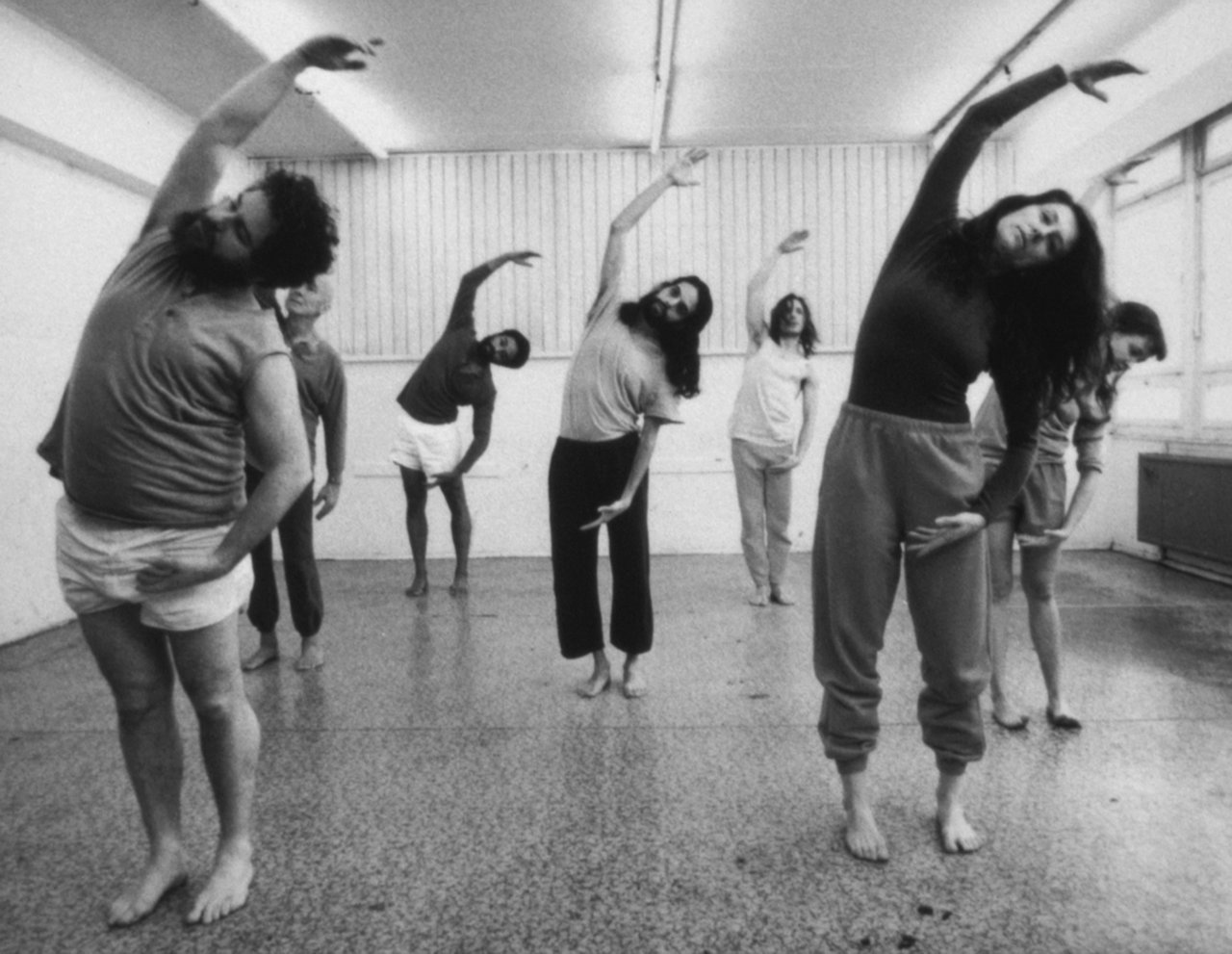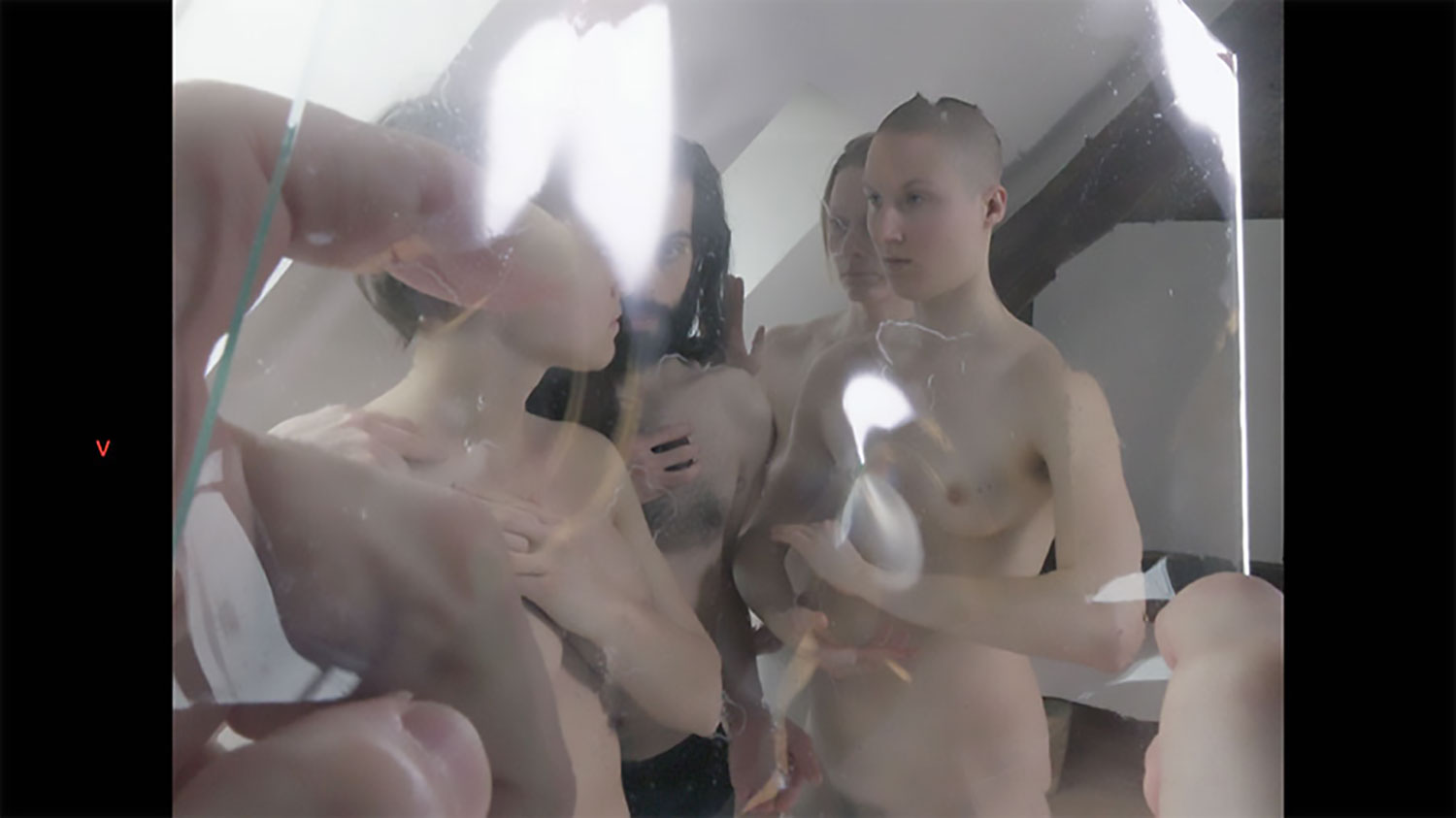Along with the blog posts, articles, reviews, and interviews collected in K-Punk, last year’s voluminous anthology of writings by the late British cultural theorist Mark Fisher, there was an unfinished introduction for a proposed book project that apparently absorbed Fisher during the last year of his life. The book was to be titled Acid Communism, and the ideas sketched out in his brief draft extend Fisher’s trenchant critiques of neoliberal capitalism while arguing for a reversal of the emphasis of left-wing struggle: rather than focusing on our opposition to the misery and injustice of life under capitalism, we should concentrate on how the survival of capital is predicated on obstructing and suppressing our “collective capacity to produce, care, and enjoy.” In Fisher’s estimation, contemporary leftism has (right or wrongly) been cast as a moralistic scold when it ought to be a standard-bearer for the joy of a life liberated from precarity, austerity, and competitive individualism. The left should be about common wealth, collective pleasure, and free time.
Part of the difficulty of this agenda is the degree to which the rhetoric of “freedom” has been co-opted by right-wing libertarianism. Fisher argues that this has been the result of deliberate calculation – that the rightward shift since Reagan and Thatcher has depended on excising any meaningful concept of left-wing emancipation, what Herbert Marcuse called “the spectre of a world which could be free.” The freedom in question is the kind evoked by the political radicalism and psychedelic counterculture of the late 1960s and early 1970s. Fisher’s idea of “acid communism” aims to rediscover the liberatory potential of that era’s experiments in raising and expanding consciousness.
This argument might come as a surprise to Fisher devotees accustomed to seeing him as a hippie-hating post-punk. In most of his writings, Fisher followed a common line in contemporary leftism that sees Sixties counterculture as tied to (or even responsible for) the later turn towards Boomer narcissism, hedonistic consumerism, and New Age delusion. In this view, sex, drugs, and rock ‘n’ roll were ultimately a fatal distraction from the protest culture of the New Left and the student radicalism of the May ’68 generation. Acid communism, by contrast, explores the possibility that it took a concentrated effort of repression to strip the counterculture of its visionary potential and reduce it to a boutique product of commodity culture – and that the utopian aspirations of the psychedelic era might not yet be exhausted.
Which is not to say that Fisher necessarily wanted activists to start doing (more) yoga, meditation, and drugs. The idea, rather, is that it could benefit political radicals to revive a “psychedelic” ethos in which improvisatory creativity could be a bridge to transformation of self and society. While commonly associated with psychoactive drugs, the fundamental idea represented here by “acid,” as an adjective, is that shifting one’s perception of reality can help contribute to changing it. In his essay, Fisher looks at numerous instances of psychedelic rock songs that described the breakdown of linear time, demonstrating how this theme exposes the contingency of the “straight world,” with its rigidly scheduled work day and allocation of status based on bourgeois values. It is also essential, however that the moment Fisher was looking back to wasn’t merely the heyday of hippie day-trippers, but the high point of the feminist, black power, and gay liberation movements – all of which challenged the psychic foundations of patriarchal, white-supremacist capitalist existence.
Since Fisher’s death in 2017, various colleagues and fellow travelers – some of whom were instrumental in helping Fisher conceive the idea in the first place – have been advocating for the potential of acid communism, through activities such as the consciousness-raising group discussions of Plan C (of which Fisher was a member), the various writings of Jeremy Gilbert, and Novara Media’s ACFM podcast. Some have even sought to test its practical applicability in British politics with the notion of “Acid Corbynism.” It’s tragic that Fisher’s early death prevented him from witnessing the resurgence of the dynamic, youth-led socialist culture of recent years, inspired in part by the successes of Bernie Sanders and Jeremy Corbyn.
Likewise, a recent spate of books with titles like Joyful Militancy, Pleasure Activism, and Radical Happiness attest to the timeliness of Fisher’s call for a return to the topics of care, joy, and collective liberation. It’s still important, however, to note that “acid” wasn’t a strictly affirmative idea for Fisher; the term seems to evoke something corrosive as much as (if not more than) emancipatory. Acid communism, as Matt Colquhoun notes, expresses the desire for an experimental leftist politics (rather than a utopian one), constantly seeking the outside of the real, longing for a world that doesn’t yet exist without shying away from the consequences of whatever wrenching change might be required to get there.
While Fisher rarely wrote about contemporary art, his ideas found a receptive audience among artists and in the pages of art magazines and catalogues. Because he was such an astute cultural critic, constantly diagnosing and anticipating shifts in the zeitgeist, it has never been difficult to find his ideas resonating beyond the cultural artifacts he chose to write about. Unsurprisingly, acid communist sensibilities have been materializing in contemporary art, even among artists who have never encountered the idea.
Viewing two recent exhibitions in Montreal, it was difficult to keep acid communism out of my mind. Jeremy Shaw’s “parafictional” sci-fi video installation Liminals screened at the Montreal Museum of Fine Arts from fall 2018 through spring 2019, while Julie Favreau’s exhibition Will Deliquesce was presented at Montreal’s Galerie Division from late 2018 into the new year. The parallels between the two are remarkable: both exhibitions involve futuristic scenarios in which groups of people perform collective rituals, using dance and body movement along with esoteric technologies to heighten awareness and access ecstatic states. One performer even appears in videos by both artists (who also share in common that they are both Canadians working in Berlin). These similarities attest to a shared intellectual and aesthetic currency very much in tune with the spirit of acid communism.
Nevertheless, Shaw and Favreau both told me that they haven’t read Mark Fisher, nor are they personally acquainted with each other, though they travel in similar circles. Undeniably, Shaw has a higher profile: he won the 2016 Sobey award, he exhibits with Berlin’s prestigious König Galerie, and his Quantification Trilogy (of which Liminals is a part) was shown at Tate Modern last year. (Next year, he’s slated for a solo exhibition at the Centre Pompidou). Favreau confided that, in Berlin, she struggles with frequent comparisons to Shaw, but the two have arrived at practices with similar concerns – each compelling in their own way, and unique.
Favreau’s performance, video, and installation works emerge out of her long-running engagement with contemporary dance, especially the “non-dance” of choreographers like Boris Charmatz and Jérôme Bel, who offered her a vocabulary to express something between gesture and form, object and performance, without resorting to language. Her works – almost always free from dialogue or narration – involve performers absorbed in hypnotic, quasi-improvisational interactions with each other and with enigmatic sculptural props and sets. These scenarios aim to cultivate an absorptive form of transcendence, an almost-psychedelic quality of sensitivity and attention, that borders on a spiritual experience – something not entirely dissimilar to ASMR. (Favreau herself is a practitioner of auto-hypnotic meditation.)
Around the time she moved from Montreal to Berlin in 2016, Favreau became interested in the possibility of making an erotic video; she wanted to immerse herself in the questions of sensuality and embodiment that were already present in her work. Délicat Pulse (2016) was the first result of this impulse, and laid the foundations for her activities since. Rather than focusing on individual characters in a situation, Favreau “became the character,” in her own words: she switched to a more “subjective,” shoulder-mounted camera and starting shooting from inside her choreographies. Délicat Pulse is filled with close-ups of bent light falling on skin, frequently ambiguous body parts moving under sheets of colored plastic, and hands gingerly caressing a crystal ball. The intimate proximity of the camera eye makes the identity of its subjects indefinite and collective; Favreau describes wanting to capture the sensation of plunging under water, of being positively disoriented, in order to dissolve the boundaries between psychic and sensual space.
Will Deliquesce was a culmination for Favreau. The exhibition’s titular 8-minute video – which was presented with an installation including sculptures and photos elaborating on its formal motifs – extends the ambient sensuality of Délicat Pulse into a more developed (though still cryptic) narrative setting: a half-dozen nude and semi-nude people (light-skinned, European, of indeterminate gender and age but youthful appearance) congregate in a sunlit apartment, touching each other’s bodies slowly and silently with their hands and a series of small objects. These sculptural prosthetics seem both technological and organic, some spiny, like cartilage, and others round and polished as stones. At one point, the camera pans out the window, where we see a strange, pinkish item hovering – a smooth, alien mass that resembles a disembodied tongue or muscle, like a larger version of the talismans the characters use to caress each other – before it glides noiselessly away, down the brick-walled alley.
Without any scaffolding explanation, the overriding impression given by the dreamlike images is of a futuristic community engaged in a telepathic intimacy transcending language. The mysterious blob and prosthetic objects suggest a kind of organic technology that has enabled new forms of perception and communication; the way these tokens are cradled and stroked implies an evolved form of the relationship people already have with their smartphones. However, nothing in Favreau’s video explicitly suggests high technology: there are no screens, nothing metal or plastic, nor even furniture or hints of personal possession aside from minimal clothing. The dominant textures of the piece – skin, brick, wood – invoke the past as much as the future. Will Deliquesce conjures a life of cerebral eroticism, in which technology seamlessly integrates with primal human needs.
The ecstatic experience, experimental ritual, and post-capitalist technology in Favreau’s work all vibrate on an acid-communistic frequency, as does her utopian-feminist investment in sexual liberation and gender fluidity. That said, her work makes no explicit reference to the communal lifestyles, psychedelic sub-culture, or political ferment of the 1960s and 70s – in part, because of its abstract focus on haptic experience rather than historical narrative. Favreau presents the viewer with feeling, not argument.
By contrast, Jeremy Shaw has been mining the history of post-60s sub- and countercultures for most of his career, with a particular focus on psychedelic drugs and ecstatic music (Shaw himself has recorded several albums of electronic music as Circlesquare and There in Spirit). One of his early breakthrough works, DMT (2004), is an 8-channel video that documents participants high on the titular hallucinogenic drug, with subtitles recounting their attempts to describe the experience after the fact. Another video series, This Transition Will Never End (2008–), is an ongoing archive of appropriated film footage in which, as Shaw puts it, “a vortex […] is used to represent the slippage of time or a transition from one reality to another.” This collection of LSD-inspired ephemera pokes (as does much of Shaw’s earlier work) at how the dominant culture and its commercial kitsch are able to absorb and repackage countercultural energy.
Shaw’s recent Quantification Trilogy is his most fully-realized project to date, consisting of three linked “parafictional” video installations that present science-fiction essay films. Each one is narrated from the perspective of a future society in which “Quantification” has replaced spirituality and art with virtual reality – possibly at the cost of evolutionary progress. In each case, dissidents attempt to revive pre-Quantification rituals. Despite the futuristic settings, the films employ a variety of outmoded tropes and media technologies whose nostalgic aesthetics disturb the facticity of the documentary mode: Quickeners (2014) reworks archival footage of Pentecostal Christian snake handlers; Liminals employs a 1960s or 70s-inspired cinema vérité aesthetic and BBC-style documentary voice-over; I Can See Forever replicates the jittery tape noise of VHS. The dating and details of the fictional scenarios are slippery and inconsistent, furthering the same ambient uncertainty. Each film progresses through a narrative account of catharsis-seeking rituals before transitioning into a climactic meltdown, with the “documentary” dissolving into digital effects and pounding music.
Of the three films, Liminals most directly references hippie-era culture, both in its dated, black-and-white cinematic aesthetic, the shaggy, longhaired appearance of the performers, and the nature of their rituals. The story concerns a “periphery altruist culture” attempting to access an alternate reality by augmenting their brains with “machine DNA” and reviving ancient spiritual rituals. These include vaguely yogic breathing and body motion, chanting, dancing, and the use of strobe lights and dream machines. Their quest is motivated by the discovery of an atrophy of portions of the brain that govern spiritual experience; without the possibility of faith in the face of doubt and the fear of death, the narrator informs us that humanity is on a countdown to extinction. The Liminals aim to transcend these limitations, breaking through into a “paraspace” between reality and “the virtual” in order to incubate a new phase in human evolution. When, at the climax of a strobe-lit dance sequence, the film suddenly shifts into vivid digital colour, the image shuddering and warping in a cascade of digital effects that collapse figure and space, smearing characters into each other, it seems they have succeeded.

Jeremy Shaw, “Liminals” (still), 2017. On loan from the Bailey Collection, Canada. Courtesy of Macaulay Fine Arts, Vancouver.
The idea of using psychedelic ritual to blast out of a doomed world into a collective consciousness certainly sounds pretty acid communistic – and it marks a departure from the distance or irony of Shaw’s earlier projects. At the same time, it’s curious that Shaw frames the survival of humanity as an ultimately spiritual rather than political problem. Neither his Quantification works nor Favreau’s Will Deliquesce make explicit gestures towards contemporary crises; in their future, these problems have either been solved or never existed. The lack of an explicit political project, in both Shaw and Favreau, perhaps softens any identification between these artworks and the ideas that Fisher laid out in Acid Communism.
On the other hand, their investment in a deep, possibly utopian futurity, beyond the anxieties of the immediate present, does seem to offer a path beyond the self-defeating pessimism that often haunts leftist circles. Given that late capitalism has created a moral rot that pervades our entire society, why not start asking after the spiritual well-being of the human species? (Especially if, as Martin Hägglund argues, such questions ought to inevitably lead us to democratic socialism.) If we don’t like the idea of going extinct, what do we want to continue living for? Julie Favreau and Jeremy Shaw extend these questions beyond our current bodies and consciousness, to a future that could be radically other.
Still, I can’t quite escape my misgivings that these artworks are offering acid communism without the communism. This raises the question of how amenable the idea of “acid” really is to being politicized – a fundamental ambiguity that haunts Fisher’s whole idea. How do we differentiate between “good” and “bad” versions of the lysergic Sixties legacy? Psychedelic culture has always been about dissolving boundaries. Accordingly, the line between an inward-looking, narcissistic notion of “acid” and a collective, politically-committed one is rather hazy. The Beatles’ “Revolution,” released in 1968 and inspired by that year’s protests, infamously counselled revolution-seeking radicals to “free your mind instead,” epitomizing the quietist strain of psychedelia that acid communism is pitched against. Rescuing the notion of “expanded consciousness” from the specter of escapist burnout requires, as in Shaw’s Liminals, a leap of faith that we might not have the hardware for anymore. But then again, maybe faith is just what we need.


























